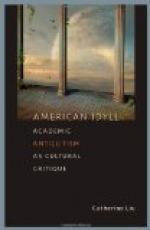The concrete result of Carl’s work with the Immigration Commission was the clean-up of labor camps all over California. From unsanitary, fly-ridden, dirty makeshifts were developed ordered sanitary housing accommodations, designed and executed by experts in their fields. Also he awakened, through countless talks up and down the State, some understanding of the I.W.W. and his problem; although, judging from the newspapers nowadays, his work would seem to have been almost forgotten. As the phrase went, “Carleton Parker put the migratory on the map.”
I think of the Wheatland Hop-Fields riot, or the Ford and Suhr case, which Carl was appointed to investigate for the Federal government, as the dramatic incident which focused his attention on the need of a deeper approach to a sound understanding of labor and its problems, and which, in turn, justified Mr. Bruere in stating in the “New Republic”: “Parker was the first of our Economists, not only to analyse the psychology of labor and especially of casual labor, but also to make his analysis the basis for an applied technique of industrial and social reconstruction.” Also, that was the occasion of his concrete introduction to the I.W.W. He wrote an account of it, later, for the “Survey,” and an article on “The California Casual and His Revolt” for the “Quarterly Journal of Economics,” in November, 1915.
It is all interesting enough, I feel, to warrant going into some detail.
The setting of the riot is best given in the article above referred to, “The California Casual and His Revolt.”
“The story of the Wheatland hop-pickers’ riot is as simple as the facts of it are new and naive in strike histories. Twenty-eight hundred pickers were camped on a treeless hill which was part of the —— ranch, the largest single employer of agricultural labor in the state. Some were in tents, some in topless squares of sacking, or with piles of straw. There was no organization for sanitation, no garbage-disposal. The temperature during the week of the riot had remained near 105 deg., and though the wells were a mile from where the men, women, and children were picking, and their bags could not be left for fear of theft of the hops, no water was sent into the fields. A lemonade wagon appeared at the end of the week, later found to be a concession granted to a cousin of the ranch owner. Local Wheatland stores were forbidden to send delivery wagons to the camp grounds. It developed in the state investigation that the owner of the ranch received half of the net profits earned by an alleged independent grocery store, which had been granted the ‘grocery concession’ and was located in the centre of the camp ground. . . .




